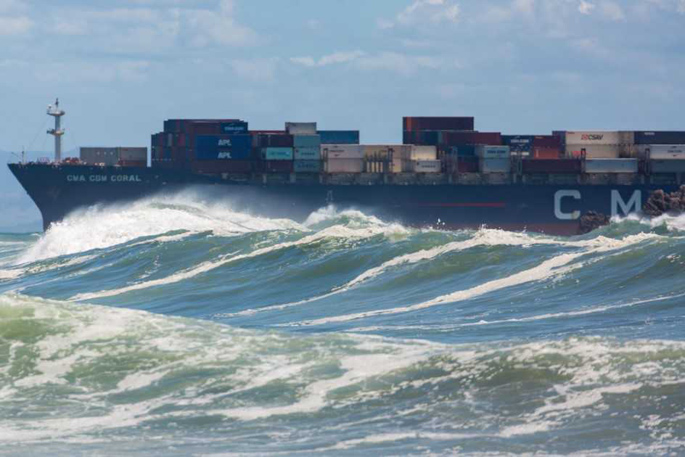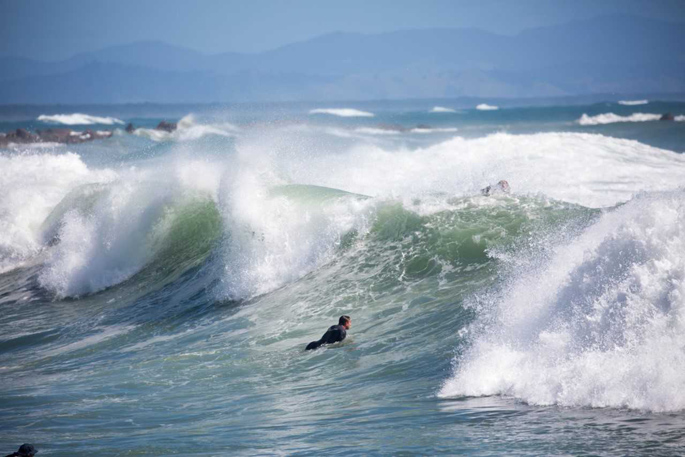Surf Life Saving New Zealand is urging people to be extremely careful on beaches along the eastern coast of New Zealand this week, due to a large swell caused by a tropical cyclone out in the north eastern pacific.
NLSNZ National Lifesaving Manager, Allan Mundy says a tropical cyclone or two deep lows near the Pacific Islands are causing large swells of up to three to four metres that are hitting the eastern coastline, mainly the Bay of Plenty for the rest of this week, followed by Gisborne and Hawkes Bay later in the week as the lows move towards the Southern Ocean.
Allan urges that people should be very vigilant when selecting a beach to swim at.
'Choose an inner harbour or local pool to cool down at, and if you are heading down to your local beach, go around low tide, especially during the week as there are no lifeguards on duty until the weekend when the volunteer services are rostered on.”
He also warns that the biggest danger is from the massive sweeper waves that hit the beach and travel right up to the sand dunes with lots of power.
A sweeper wave occurs when two swells, operating from different weather systems like the two in the Pacific right now, combine into a larger wave – often twice the size of most other waves.
Not only will they sweep all the way up the beach to the sand dunes beyond other waves, they are 'at least twice as powerful” when they return to the sea.

'These waves will easily knock over an unsuspecting walker or sweep a swimmer out of their depth very quickly when the wave returns back to the ocean. These waves cause the rip currents to become extremely strong as well,” he says.
'Another issue is the high tide, coupled with a big swell, which will catch people out while they're walking. In most places, the combination of the swell and high tide will go right up the whole beach, right up to the sand dunes.
'If the dunes where you are walking are step, you could become stranded by the water,” he says.
While many weekday lifeguarding patrols have ended around the country, Allan says it's a good time to remember that even if lifeguards are on patrol, they won't put flags up if it's unsafe to do it, which was the case for many beaches yesterday.
'Surf lifeguards are constantly assessing the conditions and if they feel the surf is too dangerous, or there are too many risks involved, they won't put the yellow and red flags out. Instead, you may notice warning signs or red flags, which means we strongly recommend against swimming,” he says.
He also encouraged those going out in the water on kayaks, stand-up-paddleboards, and other small craft to avoid the eastern beaches but says if you are heading out, to make sure you are wearing a lifejacket and have two forms of waterproof communication to get help if you need it – like a personal locator beacon and VHF radio.
'SLSNZ work closely with many other agencies including the New Zealand Police and coastguard, but we can't help you if we can't find you. So make sure if you're heading out, take those communication tools with you so that we can get to you quickly if needed,” says Allen.
SLSNZ has over 5,000 qualified volunteer surf lifeguards who patrol up to 90 locations during summer, with many emergency call-outs squads around New Zealand operating outside normal patrol hours who can be dispatched by police for rescues.
Allan also encourages people to call 111 and ask for police if they see anyone in trouble in or near the water.
'It's important you don't risk you own safety. In many places, we can get surf lifeguards to people very quickly in conjunction with the police and other agencies. So calling 111 and asking for police is really important to getting the right kind of help.”



0 comments
Leave a Comment
You must be logged in to make a comment.